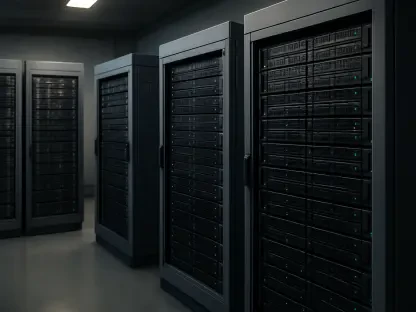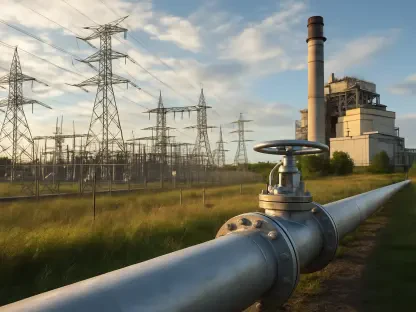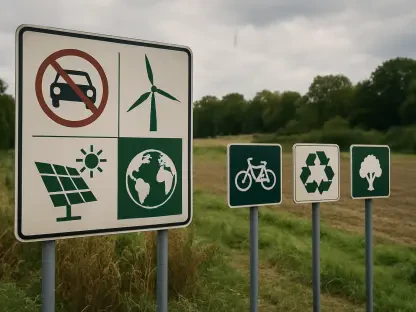As the sun rises over the rolling hills of New Hampshire, a quiet revolution is taking shape in the form of the Poverty Plains solar project in Warner, poised to be the state’s largest solar array. Spanning 20 acres with a $10 million investment, this initiative by Encore Renewable Energy is more than just a collection of 12,000 solar panels; it’s a beacon of potential for a state where solar power currently accounts for a mere 2% of the energy mix, far below the New England average of 15%. This gap has long positioned New Hampshire as a laggard in renewable energy adoption, but projects like this one could ignite a much-needed shift. Beyond the numbers, the story is deeply personal—rooted in a family-owned plot of land once used for corn and gravel, now being repurposed for a sustainable future. This endeavor symbolizes not just energy innovation, but a chance to redefine how communities engage with and benefit from clean power, setting a precedent for what might lie ahead.
The Promise of Solar in New Hampshire
A State Playing Catch-Up
New Hampshire’s journey toward renewable energy has been slower than most of its New England neighbors, with solar power lagging significantly behind states like Massachusetts and Vermont, where adoption rates soar. The stark contrast—2% versus a regional average of 15%—underscores a critical need for progress. Factors such as limited policy incentives, historical reliance on traditional energy sources, and a landscape less conducive to large-scale solar farms have contributed to this delay. Yet, the Poverty Plains project in Warner emerges as a pivotal moment, offering a chance to bridge this gap. With its capacity to power roughly 1,000 homes, it stands as a tangible step forward, challenging the notion that solar can’t thrive in a state not known for abundant sunshine. State leaders and energy advocates see this as a critical opportunity to demonstrate viability and build momentum for broader acceptance of renewable solutions.
The urgency to catch up isn’t just about keeping pace with neighbors; it’s about securing a sustainable energy future amid growing environmental concerns and fluctuating energy costs. New Hampshire’s low solar output limits its ability to reduce carbon emissions and achieve regional climate goals. Projects like Poverty Plains, visible to thousands of daily commuters along I-89, serve as a powerful visual cue that change is possible. State Representative Tony Caplan has described this initiative as a “big step forward,” reflecting a shared recognition among policymakers that scaling up renewable energy is no longer optional but essential. If successful, this array could inspire confidence among investors and residents alike, proving that even incremental gains can lay the groundwork for a more robust solar infrastructure across the state over the coming years.
Turning Unused Land into Powerhouses
One of the most compelling aspects of the Poverty Plains project is its innovative use of underutilized land, a trend gaining traction across New Hampshire as a means to advance sustainability. The 20-acre site, owned by Fred Hill and his family for generations, had long sat idle after serving as a cornfield and later a gravel pit. Transforming such spaces into solar arrays not only breathes new life into forgotten parcels but also minimizes environmental disruption by avoiding the need to clear pristine areas. Hill’s decision to collaborate with Encore Renewable Energy, a company with strong local ties, reflects a preference for partners who understand and prioritize community values over distant corporate interests. This approach highlights how renewable energy can align with local heritage while addressing modern energy needs.
Beyond Poverty Plains, the strategy of repurposing idle land holds immense potential for a state with abundant unused spaces near infrastructure like highways and power lines. Such locations are often ideal for solar development, offering proximity to grids and visibility that can educate the public about clean energy benefits. The success of this project could encourage other landowners to consider similar partnerships, turning dormant fields into productive assets. Encore’s CEO, Chad Farrell, has emphasized the importance of demonstrating real results to drive demand, suggesting that each transformed plot could serve as a catalyst for wider adoption. As more of these initiatives take root, they could collectively reshape New Hampshire’s energy landscape, proving that sustainability and land stewardship can go hand in hand in building a greener future.
Partnerships and Policies Paving the Way
Collaboration as a Catalyst
The scale and ambition of the Poverty Plains solar array would not be possible without strategic alliances, particularly Encore Renewable Energy’s partnership with the Community Power Coalition of New Hampshire. This nonprofit, representing over 60 municipalities and counties, enables 11 local governments to subscribe to the project through group net metering, a system that allows them to offset energy costs without installing their own solar infrastructure. Such collaboration reduces financial barriers for smaller towns, democratizing access to clean energy and amplifying the project’s impact beyond Warner. This model showcases how public-private partnerships can address logistical and economic challenges, making large-scale solar initiatives not just feasible but also mutually beneficial for diverse stakeholders across the region.
Furthermore, these collaborative efforts extend beyond mere energy production to foster a sense of shared purpose among communities. By linking multiple municipalities to a single project, the coalition creates a network of vested interests committed to renewable energy growth. This interconnected approach can help standardize practices and share resources, lowering costs and increasing efficiency for future endeavors. The Poverty Plains array, with its capacity to power 1,000 homes, becomes a shared achievement, reinforcing the idea that collective action is key to overcoming New Hampshire’s historical lag in solar adoption. As more coalitions form and partnerships deepen, they could set a precedent for how rural and urban areas alike can unite under the banner of sustainability, driving systemic change throughout the state.
Legislative Wins for Renewables
Policy advancements have played an equally vital role in enabling projects like Poverty Plains, with recent legislative changes creating a more favorable environment for solar development in New Hampshire. A significant milestone came when the state raised the net metering cap for municipalities from one to five megawatts, allowing larger projects to connect to the grid and distribute benefits more widely. This adjustment directly facilitated the group net metering model used in Warner, empowering local governments to participate without the burden of individual infrastructure costs. Such reforms signal a growing recognition among lawmakers of the need to remove bureaucratic hurdles and incentivize renewable energy at a scale that can make a real difference in the state’s energy portfolio.
The impact of these legislative wins extends to fostering investor confidence and encouraging innovation in the renewable sector. With clearer and more supportive policies, companies like Encore can plan and execute projects with greater certainty, knowing that the framework exists to support their efforts. This policy shift also reflects feedback from communities and energy advocates who have long pushed for structural changes to accelerate solar growth. As New Hampshire continues to refine its regulatory landscape, the success of initiatives underpinned by these reforms could prompt further adjustments, potentially expanding incentives or streamlining permitting processes. The ripple effect of such changes might position the state as a more attractive hub for clean energy investment, paving the way for a steady increase in solar capacity over time.
Community Benefits and Broader Impact
Beyond Energy—Strengthening Towns
The Poverty Plains solar project transcends its primary goal of energy production by delivering direct benefits to the Warner community, illustrating how renewable initiatives can enhance local life. During a milestone event marking the project’s progress, Encore Renewable Energy presented a $20,000 check to the Warner Beautification Committee. This funding will bolster public safety through improved lighting around the town hall and support future community projects. Such contributions underscore a commitment to not just powering homes but also enriching the social fabric of the areas where solar arrays are built. For residents, these tangible outcomes transform an abstract concept like clean energy into a source of pride and practical improvement, fostering goodwill and support for similar developments.
Moreover, these community-focused actions set a powerful example for how renewable energy companies can build trust and long-term relationships with local stakeholders. By prioritizing initiatives that address specific town needs, Encore demonstrates a model of corporate responsibility that goes beyond profit. This approach can mitigate skepticism or resistance often associated with large-scale projects, showing that solar development can be a win-win for both energy goals and local priorities. As other towns observe Warner’s experience, they may be more inclined to welcome solar farms, especially if paired with commitments to community enhancement. This cycle of positive reinforcement could gradually shift perceptions, embedding renewable energy as a cornerstone of municipal progress across New Hampshire.
Inspiring a Solar Movement
The visibility of the Poverty Plains array along I-89 isn’t just a matter of location—it’s a deliberate strategy to inspire a broader movement toward solar energy in a state hungry for examples of success. Thousands of commuters passing by daily are reminded that renewable power can work, even in a region not synonymous with endless sun. This constant visual cue, coupled with the project’s anticipated completion next summer, positions it as a flagship effort that could alter public perception. Encore’s CEO, Chad Farrell, has noted that tangible results are crucial to spurring demand, suggesting that seeing is believing when it comes to convincing skeptics and galvanizing support for more solar installations throughout New Hampshire.
Beyond changing minds, the project’s success could act as a catalyst for additional renewable energy efforts, with other large arrays already in development in places like Concord and Derry. Each completed initiative builds on the last, creating a domino effect that encourages investment and policy support. State leaders and energy advocates hope that Poverty Plains will serve as proof of concept, demonstrating economic and environmental benefits that resonate with both rural and urban communities. If this momentum continues, it could mark the beginning of a widespread shift, where solar power becomes not just an option but a priority in New Hampshire’s energy strategy. Looking back, this period may be defined by pioneering projects that laid the foundation for a cleaner, more resilient energy future, with each step forward inspiring the next.









